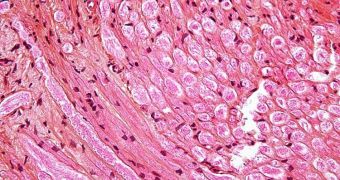Researchers at the University of Sheffield, in the UK, and the Laser Zentrum Hannover, in Germany, say that they are currently working on a new method for aiding neural growth. Their approach could come in handy for people who've suffered recoverable nerve damage.
The approach is primarily developed for people who went through traumatic accidents that harmed various nerves. Since these bundled axon fibers carry both sensation and movement signals, they are extremely important for the body.
Oftentimes, when a person goes through a serious accident, some nerves are severed, leaving that individual without the ability to feel various sensations. In the most severe cases, the nerves that are damaged are located in the spine. This leads to partial or total paralysis.
The medical devices the international collaboration is developing are called nerve guidance conduits (NGC), and feature an advanced design. The latter was made possible by the use of a technique called laser direct writing, and by employing computer aided design/manufacturing (CAD/CAM).
In hospitals today, nerve damage is addressed by surgically sticking the two ends of a broken axon bundle together, or by grafting them in the same manner. Complete recovery is unfortunately not possible in all cases, EurekAlert reports.
“When nerves in the arms or legs are injured they have the ability to re-grow, unlike in the spinal cord; however, they need assistance to do this. We are designing scaffold implants that can bridge an injury site and provide a range of physical and chemical cues for stimulating this regrowth,” John Haycock says.
He holds an appointment as a professor of bioengineering at the University of Sheffield. Details of the investigation were published in the April 23 issue of the medical journal Biofabrication. The NGC are made out of a biodegradable, synthetic polymer based on polylactic acid (PLA).
“Nerves aren't just like one long cable, they're made up of lots of small cables, similar to how an electrical wire is constructed. Using our new technique we can make a conduit with individual strands so the nerve fibers can form a similar structure to an undamaged nerve,” adds Dr. Frederik Claeyssens.
The expert, who was the lead author of the Biofabrication paper, is based at the University of Sheffield Department of Materials Science and Engineering. The study was funded by the UK Engineering and Physical Sciences Research Council (EPSRC).

 14 DAY TRIAL //
14 DAY TRIAL //